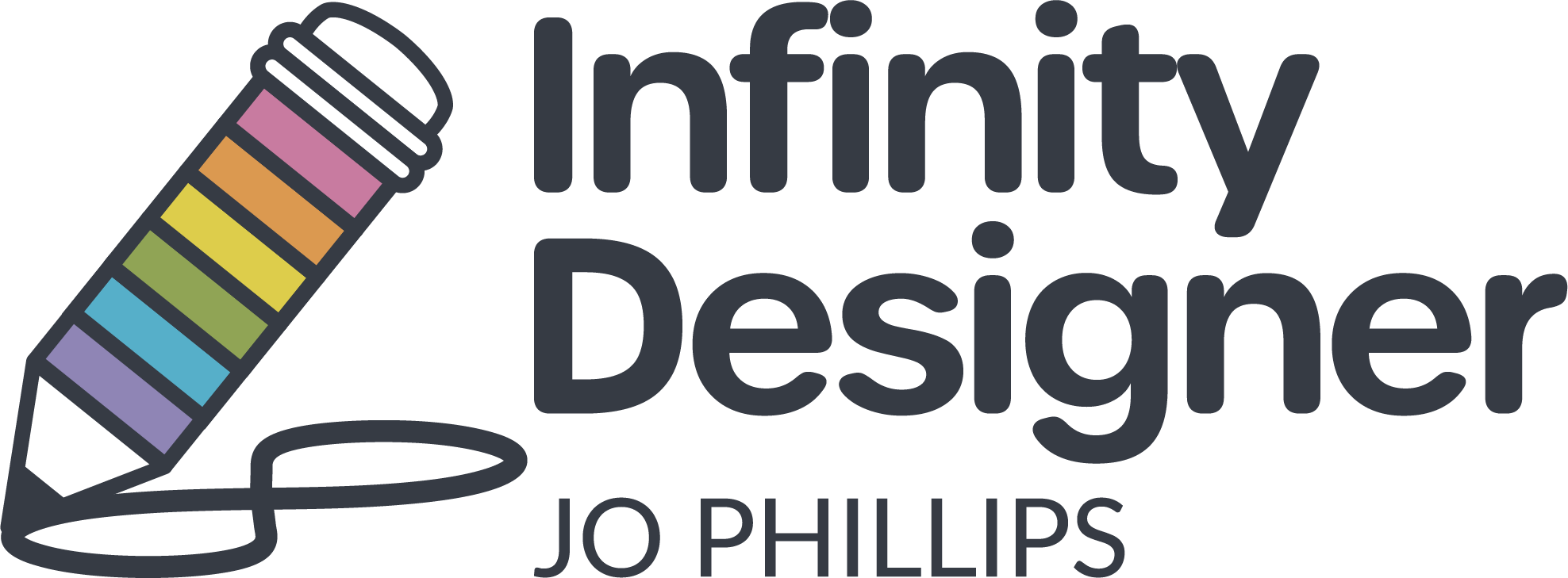Infinity Designer - A Neurodivergent Lens: How My Autism Shapes My Design Journey
- Jo Phillips

- Sep 13
- 4 min read
In the world of surface pattern design, creativity and connection go hand in hand... but for me, navigating both as an autistic surface pattern designer has shaped the way I see, create, and share visual stories.
My story underpins who I am as a designer, and a person... learning about my autism later in life changed everything. From self-discovery to design, I’ll share what I’ve learned, how being autistic influences my work, and why this identity brings clarity, and calm, to the chaos of creative thinking.

Discovering Autism and the Power of Visual Thinking
Even though I’ve always been creative, I was diagnosed as autistic at 43 - later than many. Although late diagnosis can be common for women, and like many women who do get diagnosed later in life, it came as a bit of a surprise. My nephew was identified at school and because I wanted to help and understand, I did my own deep dive and looked into it. And I was amazed: ‘Oh my gosh, this is me’.

It made me realise that I'd previously looked into it but ruled it out due to being hyper-empathetic and having read that people who are autistic lack empathy. As I looked into it, I found that many Autistic people are hyper-empathetic and thanks to more understanding of autism now I was able to finally connect the dots. The realisation came as a profound insight into why the world sometimes felt overwhelming, and why I process with images and patterns rather than words... which helped me find my way back to creativity and found Infinity Designer.
Emotions can be so challenging to pin down with language, but patterns and creativity gives me an outlet.
I strive to create designs that reflect who I am, and make people feel something - sharing my autistic view in a way people can connect with, even when words fall short. I love being able to bring this skill to clients too, using my hyper-empathy to understand what feelings a brand need and want to share, creating designs that reflect these feelings for their customers to connect with too.
The Strength in Neurodivergence: How Being Autistic Fuels My Work
1. Hyper‑Empathy Through Visual Storytelling
Contrary to outdated stereotypes, many autistic people, including me, experience intense empathy. My design process is deeply rooted in understanding human emotion and translating it into colour, texture, and motif.
2. Visual Language Over Words
I think in images. Even when I can't label what’s on the page, I can trust my designs to speak truth. That’s why my collections often have layered botanical motifs and intuitive colour relationships, all reflecting how I perceive the world.
3. Precision, Repetition, Pattern
The logic of repeat patterns, swatches, and structured palettes offers comfort. There's a rhythm to designing, drawing, and adjusting that speaks directly to my autistic brain’s need for clarity and consistency.

From Self‑Advocacy to Creative Connection
Putting my neurodivergence into words wasn’t simple. The NHS psychiatrist told me "You do have some Asperger’s traits, but there isn’t any help for autistic people as adults in your local area, so we won’t be going down a diagnostic path."
After a complaint, quoting the Autism Act and the Equality Act, I finally got a diagnosis from The Lorna Wing Centre, who are particularly understanding about female diagnosis and felt immense validation.
I really love my neurodivergences, and I was delighted to have these diagnoses. It gives me the power to help myself, even if that means asking for support and help with other things. As a hyper-visual person. I’m always full of ideas, and I can channel this into my businesses. I’m just ploughing my expertise in visualising and imagery into my designs for Infinity Designer.
If you're interested in finding out more about my journey, you can read more about my experience with diagnosis and how it impacted my creativity in the article featured by National Autistic Society.
Why This Matters for Clients and Collaborators
As a neurodivergent surface pattern designer, here’s what I bring to the table:
1. Authentic empathy:
My patterns reflect real emotion, not trend forecasts.
2. Consistency in design:
Structured repeats and intentional colour palette choices are part of how I think.
3. Unique point of view:
My process is shaped by visual-first thinking, not tables or bullet points.
If you're a brand or creative lead seeking surface patterns that are thoughtful, emotionally reflective, and meticulously structured, let my autistic perspective become part of your design story.

Let’s Chat Patterns (Through a Lens You Can Feel)
If you're curious about working with a surface pattern designer whose neurodivergent background brings clarity, empathy, and structured creativity to every collection, I'd love to connect.
If you're curious how this ties into commercial work, I also explore this in my blog on understanding pricing as a surface pattern designer.
Book a free video call here and let’s talk about how your vision can be elevated through built-in intention, compassion, and visual rhythm.



Comments